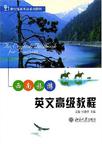西南旅游英文高级教程
出版时间:2004-8 出版社:北京大学出版社 作者:周毅 页数:239
前言
随着我国旅游业和旅游教育事业的迅猛发展,尤其随着西部大开发进程的不断加快,编写一部既具有理论高度和国际视野又结合西南地区旅游发展特色的高层次旅游专业英语教材已经势在必行。这就是本教材出炉的初衷,也是本教材的一大特点。教材里的一些内容虽着眼于西南地区,但对中国的其他地区仍有普遍的参考价值,因为书中所展示的专业理念和英语水准决不仅限于某个地区。本书的主要对象为大学旅游专业的本科生和研究生,也可供旅游专业的教育工作者和旅游行业的中、高层管理人员阅读和参考。 该教材既然称为“高级教程”,就意味着它在介绍中西方旅游研究的最新理念、信息和案例时保持着较高的专业理论水平、广泛的知识内容、国际性的理念以及相当的英语语言难度。书中所涉猎的专业理论知识已大大超越本学科的初级阶段,其英文自然为原文程度。由于这是一本高级旅游专业英语教材,故一般的英语语言难点和语法问题及其练习不属于本教材的范围。参与设计与编写本教材的十五位中外学者(其中有两位美国人,一位法国人)除一人任职于西南地区的旅游公司外,其他人均任教于西南地区的主要高校,在旅游学和外语方面都有较高的造诣及丰富的行业经验,其中有些学者曾多次到欧美国家考察、学习和研究,回国后长期在高校从事旅游专业的教学和研究。这支特殊编写队伍的努力,使这本教材既体现了中西方有关旅游学和旅游业的最新进展,又展示了中西方在旅游问题上的不同视角。教材在介绍中西方旅游研究的最新发展情况、理念与信息以及西南地区旅游业的实际案例的同时,还注重专业英语语言的深度和规范。通过本教材的学习,读者既能透过多个视角来审视旅游业和旅游教育事业,学到丰富、最新的旅游理念并且拓宽行业视野,又可掌握地道的专业英语的表达方式,从而为将来从事与旅游相关的科研、教学和管理工作奠定坚实的基础。培养西南地区高素质的旅游专门人才,让我国的旅游业和旅游教育事业尽快与国际接轨,为祖国的旅游业和旅游教育事业的发展贡献一点力量,是本书编著者的宗旨。 全书共分十个单元,涉及十个旅游学和旅游业的专题;每个单元又含三章,每章围绕相关专题进行深入的探讨,课文后列有英中文双解的关键词、注释和口笔头练习以及参考资料。
内容概要
本书介绍中西方旅游研究的最新理念、信息和案例时保持着较高的专业理论水平、广泛的知识国际性的理念以及相当的英语语言难度。书中所涉猎的专业理论知识已大大超越本学科的初级阶段,共英文自然为原文程序。由于这是一本高级旅游专业英语教材,故一般的英语语言难点和语法问题及其练习不属于本教材的范围。教材在介绍中西方旅游研究的最新发展情况、理论与信息以及西南地区旅游业的实际案例的同时,还注重专业英语语言的深度和规范。 本书的主要对象为大学旅游专业的本科生和研究生,也可供旅游专业的教育工作者和旅游行业的中、高层管理人员阅读和参考。
作者简介
周毅,四川大学旅游学院文化系副主任,四川师范大学/新加坡英华美学院客座教授。1982年毕业于四川大学外国语言文学系,1987年获英美文学硕士学位,目前在职攻读中国专门史博士学位。1988-1989年赵美国进修“美国文化”和“专业英语教学法”,以后多次赴美、加及东亚、南亚、东南亚国家考察访问。自1982年开始从事英语专业的教学研究,1993年开始从事旅游专业本科生及研究生的专业英和旅游文课程的教学。先后出版编著、译著和教材八部,发表论文和译文数十篇。 张晓萍,女,云南大理人。1982年毕业于云南师范大学外语系,现任云南大学工商与旅游管理学院教授,硕士生导师。长期教授专业英语课程,是国内较早从事旅游人类学系学习“旅游人类学”,师从美国著名旅游人类学家纳尔逊·格雷本。2003年10月,到日本东京大学人类学系进行了访问、学习,内容为文化资源的开发与保护及中日旅游人类学比较研究。发表了数篇与旅游文化有关的论文,此外主编《旅游英语》,参编《人类学百年争论》、《云南旅游大全》主持翻译了《云南旅游之最》、《东道主一游客——旅游人类学研究》、《人力资源管理》、《游客管理——世界文化遗产案例分析》等。今后的研究方向为旅游、文化与现代化。
书籍目录
Unit One TourismChapter 1 Traveling and tourism Chapter 2 Analysis of Tourism ProductsChapter 3 The Status Quo and Future Prospects of the Tourism Industry In Southwest China Unit Two Consumer Psychology and Behavior TourismChapter 1 Tourism Requirements and TrendsChapter 2 Consumer Behavior in Tourism Chapter 3 Analysis of Consumer Psychology and Behaviour of Foreign Travelers in SichuanUnit Three Effects of TourismChapter 1 Introduction to Effects of TourismChapter 2 Some Basic Concepts of Tourism StatisticsChapter 3 Analysis of Economic Impacts of Tourism in Yunnan ProvinceUnit Four Tourism Culture and Cultural Tourism Chapter 1 Cultural Tourism:A Brief IntroductionChapter 2 A Comparative Study of Chinese and Western Tourism CulturesChapter 3 Socio-Cultural Impacts of TourismUnit Five EoctourismChapter 1 The Ecotourism IndustryChapter 2 Management Plicies of the U.S.National Park ServiceChatper 3 Impacts of Tourism on the EnvironmentUnit Six Tourism Resources and ManagementChapter 1 Hotel Classification SystemsChapter 2 Management of World heritage SitesChapter 3 General rights and duties of Aultrlia's Propietors of Tourism Activities and AttractionsUnit Senven Tourism Marketing Chapter 1 Principles of Tourism Marketing Chapter 2 Case Study on the Marketing of Singapore International AirlinesChapter 3 SWOT Analysis of Yunnan's Tourism Sector Unit Eitht Tourism ManagementUnit Nine Tourism Planning Unit Ten Studies of Anthropology of Tourism in China and the West
章节摘录
Chapter 1 Traveling and Tourism People used to travel in search of food or animal skins for clothing, or for territorialexpansion. Travel in those early days was time-consuming and dangerous. The word travelcomes from the French word "travail," which means work, and that is what it was, hardwork. Most early travel was on foot, but later donkeys began to be used. Waterways andseaways also frequently became paths for trade and commerce. Starting from several millennia B.C. and continuing for several hundred years A. D. ,organized travel in the West probably originated during the great empires of the Persians,Assyrians, Greeks, Egyptians, and Romans. During the empire period, travel developedfor military, trade, and governmental reasons, as well as for communications from thecentral government to its distant territories. Travel was also necessary for artisans and architects "imported" to design and construct the great palaces and tombs, many of which are still destinations for today's tourists. Travel led, as well, to the infrastructure construction of roads, canals, mileage markers, sentinel posts, wells, hostelries (crude as they were), and eating spots. In ancient Greece, people traveled to the Olympic Games, an event that required accommodations and good services for both the participants and the spectators. The same demands are made today by people flocking to major sporting events. During the Middle Ages , from about A.D. 500 to 1400, much of the middle class disappeared, and trade declined as people returned to the land. The shadow of what is sometimes referred to as the Dark Ages2 began to lift in about A.D. 1000 when the Church started to do a great deal of building, particularly in France where the new churches and cathedrals became, and still are today, tourist attractions.
图书封面
评论、评分、阅读与下载
